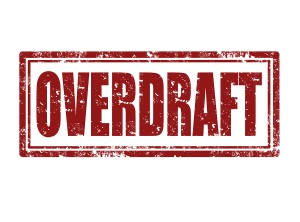More than one-third of Americans maintain an overdraft account because of forgetfulness and a paucity of funds. The average overdraft and non-sufficient fund (NSF) fees cost roughly $225 each year. A new report suggests that paying overdraft fees can actually cost more than the cost of purchase.
The Consumer Finance Protection Bureau (CFPB) published the results of a new study Thursday and discovered that major financial institutions usually charge their customers a $34 penalty when they overdraw their accounts. These penalties are also charged even when customers return to a positive balance three days later.
 Experts say that the most interesting finding from the study is that the $34 penalty occurred when most of the purchases were $24 or less, which makes the overdraft fees more expensive than the cost of purchases.
Experts say that the most interesting finding from the study is that the $34 penalty occurred when most of the purchases were $24 or less, which makes the overdraft fees more expensive than the cost of purchases.
According to the CFPB, banks profit by collecting more than half of their checking account income from the fees in question. The federal government agency found that heavy overdrafters are charged with approximately $900 in extra costs every year.
Furthermore, the CFPB reported that three-quarters of all overdraft fees originate from eight percent of bank customers. Within that figure, more than 10 percent of account holders aged between 18 and 25 are provided with at least 10 overdraft fees per year, while 36 percent of 26- to 45-year-olds are hit with at least one overdraft fee.
Moving forward, the CFPB is considering measures to take to ensure that financial institutions process transactions by size rather than by time of their purchase. “Overdraft fees should not be ‘gotchas’ when people use their debit cards,” said bureau director Richard Cordray, a former Ohio attorney general, in a conference call with reporters.
Banking customers may be pleased with the organization’s potential actions, considering that close to half of the banking clientele with 30 or more transactions each month pay one or more fees every year. This process, known as the high-to-low ratio, exhausts accounts more quickly. For instance, large expenditures, like rent and auto loan payments, over smaller purchases, such as a cup of coffee or a sandwich, which can then trigger an overdraft fee.
Industry studies have found that overdraft fees are a $30 billion business for banks. However, more and more banks are depending on fees for their revenues due to enormous regulatory costs and low interest rates.
“The average bank overdraft fee at a large, traditional bank is $35, and extended overdraft fees make the cost per incident even higher, so consumers are paying hundreds of dollars in unnecessary overdraft fees,” said Nick Clements, co-founder of MagnifyMoney, in a statement. “In fact, Americans spend over $30 billion a year on overdraft fees. New alternatives exist that could cut those fees by over 70%, putting more than $20 billion back into American pockets.”



